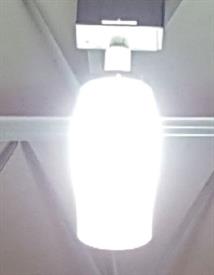Eastman Chemical has a Spectar Blog. Spectar, is a copolyester used for many applications, one of them is for LED light diffusion and transmission.
Q: I know Eastman Spectar™ copolyester well in the retail market, but didn’t know about the offerings in the lighting market. What are some of the material options available for my LED lighting projects?
A: With the introduction of Spectar Stratus, Eastman offers light-diffusing technology for extruded and injection molded parts. Best of all, our options still allow optimum light transmission while “hiding” the light source.
Few things are as important to architectural spaces as lighting. Certainly, light helps make an area safer, healthier, more comfortable, and more useful. But light also carries an emotional appeal. The right lighting can soothe or excite us; it inspires us and makes us more productive: and it connects us to our physical space. As such, creative lighting is a crucial part of any brand experience in retail or work environments.

Advantages of Spectar Stratus:
High light transmission
Outstanding hiding power
Design flexibility
Customize opacity and light transmission
Simple processing
Chemical resistance and durability
Process sustainability
GREENGUARD Indoor Air Quality Certified®


This 6” OD Stratus tube glows magnificently when containing a 100W “corn cob” LED. It completely hides the light source and illuminates in all directions. The bowl shape is an illusion, this is a 5” tube.
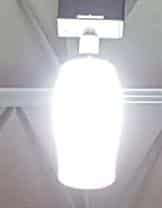
In changing our 400 w metal-halide bulbs this year to efficient LED lights we used our own Stratus tubing. Our previous metal-halide lighting system was designed to conically flood the shop floor. But a large section of our plant has storage shelves and mezzanines. We wanted diffuse light that would illuminate from the floor up to 18 ft.

We removed the bay dome, inserted low-cost corn-cob LED’s (between 100 and 120w, and were pleased with the result. Things brightened up immediately. Gaylords that were previously in the dark were so brightened that we could easily read their labels.
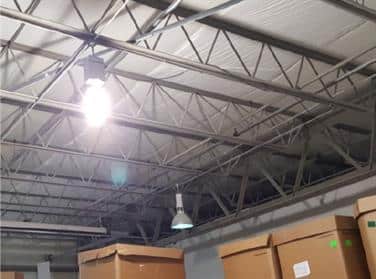
The tubing not only hid the light source but took on a bowl appearance. It not only softened the light, but the tube glowed even when it was below the light source. The harsh LED lights were tamed and our cost savings were significant.
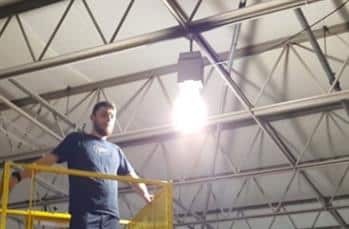
Fixture before illumination. You can see enough through the Stratus tube to see the rim of the corn-cob light.
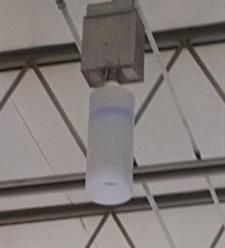
After illumination, the tube glows past the lamp while completely protecting eyes from the harsh LEDs.
